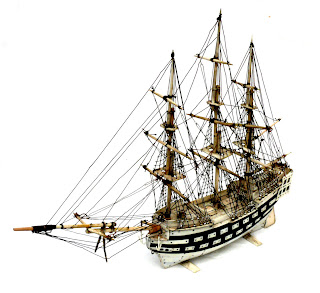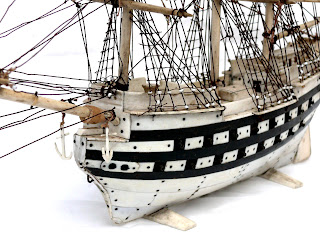Bob and Debbie invited us to a long weekend at their time-share in Leavenworth, WA, picked us up about 8 Wednesday morning, weather overcast and foggy. At the Santiam rest stop north of Albany, we ran by the decommissioned B-1 bomber being transported from Tucson to the Boeing plant in Renton. It was the largest load ever on I-5--29 feet wide, 146 feet long--so it traveled only at night to minimize disruption, but the canvas-wrapped fuselage parked beside the pavement created disruption of its own. We drove off at the next exit, turned back, stopped, and along with many others, got out to photograph the rare sight.
Our next stop was at the concrete replica Stonehenge commissioned by Sam Hill in 1918 at the Quaker community he tried to establish on the Columbia in the early 1900s. The community failed, the Stonehenge was turned into a WWI memorial.
We headed north, still under cloudy skies and were captivated by a lenticular formation with Mt. Adams in the distance.
We arrived in Leavenworth after dark and found the time-share. The next morning, I enjoyed the view from the balcony.
The forecast called for rain the next day, so we took in the fish hatchery. Exhibits in the main building included a black bear that Bob decided to wrestle (with the help of some photo editing).
We hiked a trail by Icicle Creek where, according to the lady in the hatchery office, local Indians had some years before planted salmon given to them by the hatchery and now in season fish from platforms for salmon that had returned. We could see this year's returnees in the creek, two to three feet long, a few quite red, some with white fins and tail, most still dark.
We also saw small birds; the walk was pleasant, the trail paved, level, and included signs identifying plants, birds, and animals in the area.
The town boomed in the first half of the 20th century, sustained by logging and the Great Northern Railway, but fell on hard times. Then in 1958, after visiting Solvang, CA, owners of a business on Front Street talked other business owners into converting the town into a Bavarian village theme park.
Now the town is booming again: most of the stores, restaurants, and buildings are pseudo Bavarian, the only industry is tourists, of which there seem to be a few, and prices are Miami Beach.
We ate a lot of wurst and schnitzel, red cabbage, and some fine strudel.
The most interesting attraction was the nutcracker museum, opened only in 1995, now with some 6,000 nutcrackers, ranging from prehistoric to modern, with many from the 18th and 19th centuries.
We drove 12 miles to Cashmere, home to the Aplets & Cotlets factory, which we toured.
In the attached store, free samples were available--we sampled freely. Yum. Fresh aplets and cotlets are not like what you get locally. We buzzed in sugar high until lunch at a barbecue behind a lovely bronze pig.
Two large antique malls, filled mostly with the usual castoffs, took much of the day. I found an 1880s meat press, a small cast iron device for extracting a few ounces of meat juice for babies and invalids who could not easily chew.
Sunday we started back, with a long stop at Maryhill Museum, which houses perhaps the largest collection in the U.S.--some 80 pieces--of life-time casts of Auguste Rodin sculpture, as well as a hodgepodge of items accumulated by Sam Hill and friends, and extensive displays of Native American artifacts.
Among the Rodin items are number of plaster casts, working models that he used in deciding on the final form of bronze casts.
The plaster Thinker is signed in pencil, a gift from Rodin to Loïe Fuller, a pioneer of modern dance in Paris and friend to both Rodin and Sam Hill.
Soon enough, we were back on the road and not long after were at home greeting cats and dog.
A nice weekend.
Our next stop was at the concrete replica Stonehenge commissioned by Sam Hill in 1918 at the Quaker community he tried to establish on the Columbia in the early 1900s. The community failed, the Stonehenge was turned into a WWI memorial.
We headed north, still under cloudy skies and were captivated by a lenticular formation with Mt. Adams in the distance.
We arrived in Leavenworth after dark and found the time-share. The next morning, I enjoyed the view from the balcony.
The forecast called for rain the next day, so we took in the fish hatchery. Exhibits in the main building included a black bear that Bob decided to wrestle (with the help of some photo editing).
We hiked a trail by Icicle Creek where, according to the lady in the hatchery office, local Indians had some years before planted salmon given to them by the hatchery and now in season fish from platforms for salmon that had returned. We could see this year's returnees in the creek, two to three feet long, a few quite red, some with white fins and tail, most still dark.
We also saw small birds; the walk was pleasant, the trail paved, level, and included signs identifying plants, birds, and animals in the area.
The town boomed in the first half of the 20th century, sustained by logging and the Great Northern Railway, but fell on hard times. Then in 1958, after visiting Solvang, CA, owners of a business on Front Street talked other business owners into converting the town into a Bavarian village theme park.
Now the town is booming again: most of the stores, restaurants, and buildings are pseudo Bavarian, the only industry is tourists, of which there seem to be a few, and prices are Miami Beach.
We ate a lot of wurst and schnitzel, red cabbage, and some fine strudel.
The most interesting attraction was the nutcracker museum, opened only in 1995, now with some 6,000 nutcrackers, ranging from prehistoric to modern, with many from the 18th and 19th centuries.
We drove 12 miles to Cashmere, home to the Aplets & Cotlets factory, which we toured.
In the attached store, free samples were available--we sampled freely. Yum. Fresh aplets and cotlets are not like what you get locally. We buzzed in sugar high until lunch at a barbecue behind a lovely bronze pig.
Two large antique malls, filled mostly with the usual castoffs, took much of the day. I found an 1880s meat press, a small cast iron device for extracting a few ounces of meat juice for babies and invalids who could not easily chew.
Sunday we started back, with a long stop at Maryhill Museum, which houses perhaps the largest collection in the U.S.--some 80 pieces--of life-time casts of Auguste Rodin sculpture, as well as a hodgepodge of items accumulated by Sam Hill and friends, and extensive displays of Native American artifacts.
Among the Rodin items are number of plaster casts, working models that he used in deciding on the final form of bronze casts.
The plaster Thinker is signed in pencil, a gift from Rodin to Loïe Fuller, a pioneer of modern dance in Paris and friend to both Rodin and Sam Hill.
Soon enough, we were back on the road and not long after were at home greeting cats and dog.
A nice weekend.


























